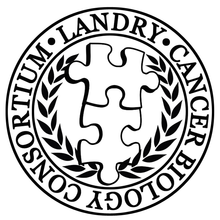Matthew McBride
Kadoch Lab
The SS18-SSX Fusion Oncoprotein Hijacks BAF Complex Targeting and Function to Drive Synovial Sarcoma
Mammalian SWI/SNF (BAF) complexes are mutated in over 20% of human cancers, with gain- and loss-of- function perturbations each implicated in malignancy. In synovial sarcoma (SS), the hallmark SS18-SSX fusion oncoprotein renders BAF complexes aberrant in two manners: gain of 78 amino acids of SSX to the SS18 subunit, and concomitant loss of BAF47 subunit assembly. Here we demonstrate that SS18-SSX globally hijacks BAF complexes on chromatin to activate the unique SS transcriptional signature found in primary tumors and cell lines. Specifically, SS18-SSX targets BAF complexes from enhancers to broad polycomb domains, at which they oppose PRC2-mediated repression to activate bivalent genes. Reassembly of BAF47 upon suppression of SS18-SSX mediates enhancer activation, but is dispensable for SS cell proliferative arrest. These results establish a global hijacking mechanism for SS18-SSX on chromatin, and define the distinct contributions of two concurrent BAF complex perturbations.
Caitlin A. Nichols
Beroukhim Lab
Loss of Heterozygosity of Essential Genes Represents a Novel Class of Cancer Vulnerabilities
Despite progress in precision cancer drug discovery, few highly selective therapies exist in the clinic, creating the need for additional therapeutic targets. We have shown that copy number alterations (CNAs) in essential genes represent novel non-driver gene vulnerabilities in cancer. Here we interrogate loss of heterozygosity (LOH) of single nucleotide polymorphisms (SNPs) located in essential genes as a novel class of candidate therapeutic targets. We hypothesized that monoallelic inactivation of the single allele retained in tumors can selectively kill cancer cells, while somatic cells, which retain both alleles, will tolerate allele-specific knockout. We identified a list of over 5000 common missense SNPs in at least 1500 essential genes that undergo LOH in cancer and performed proof-of-concept allele-specific gene inactivation in two essential genes (PRIM1 and EXOSC8) using CRISPR-Cas9. We assessed the fidelity of allele-specific gene disruption and its cellular effects on gene expression, cell growth, and cell death in LOH and non-LOH genetic contexts. We determined that allele-specific knockout of PRIM1 and EXOSC8 selectively targets cells harboring only the single targeted allele of that gene. In cells retaining only the sensitive allele, we observed decreased target gene expression and cell viability that did not occur in cells retaining the resistant allele. We conclude that allele-selective inactivation of essential genes in regions of LOH (such as PRIM1 and EXOSC8) represents a novel candidate therapeutic strategy in cancer. The corresponding class of novel non-driver cancer vulnerabilities may provide a rich source of targets for future precision therapeutic development using gene editing, RNAi, or small-molecule approaches.
Jessica Spinelli
Marcia Haigis Lab
Metabolic Recycling of Ammonia Generates a Localized Pool of Glutamate that Promotes Mitochondrial Translation in Breast Cancer Cells
Although ammonia (NH3) is a ubiquitous by-product of tumor metabolism, the fate of NH3 in cancer had never been investigated. Plasma NH3 is maintained below 50 M in healthy adults to evade toxicity associated with hyperammonemia. Conversely, in the tumor microenvironment (TME), NH3 accumulates to sub-millimolar levels. Therefore, we hypothesized that cancer cells are uniquely poised to tolerate NH3. In this study, we investigated the fate of NH3 in cancer cells as either (1)- a toxic metabolic waste product or (2)- a nitrogen source for biosynthetic reactions.
To determine the fate of NH3 in cancer cells, we developed an LC-MS assay that enabled detection and distinction of NH3isotopologues (14NH3 and 15NH3) in cellular lysates to facilitate metabolic tracing studies (Spinelli et al.,Sci Rep, 2017). Using this assay in combination with metabolomics, we tracked the fate of 15NH3 in breast cancer cells. We found that NH3 generated in metabolic reactions is recycled with 60% efficiency through reductive amination catalyzed by glutamate dehydrogenase (GDH), generating glutamate and downstream amino acids. Assimilation occurs via the “reverse” activity of GDH, in which NH3 is the kinetic limitation of this reaction. Therefore, assimilation is specific to physiological niches that have high NH3 levels, such as the TME. We then measured NH3 recycling in vitro, in vivo xenograft models, and in primary tumors resected from breast cancer patients at Massachusetts General Hospital. Thus, we demonstrated that tumor cells scavenge the metabolic by-product NH3 as a nitrogen source for biomass (Spinelli et al., Science, 2017).
Next, we characterized the effect of NH3 on breast cancer growth and survival. NH3 was not toxic to tumor cells, contrary to normal cells. GDH-mediated NH3 assimilation stimulated proliferation in breast cancer cells, suggesting that amino acids are a limiting factor for proliferation. Since NH3 is initially assimilated by GDH in the mitochondria, we investigated whether subcellular compartmentalization of amino acids played a role in proliferation. Through metabolic tracing, rapid immunoprecipitation of mitochondria for metabolomics, and genetic perturbations, we identified that glutamate generated downstream of NH3 assimilation is compartmentalized between the mitochondria and cytosol through the activities of the GOT isozymes. Depletion of GOT1, which converts aspartate to glutamate in the cytosol, repressed proliferation, whereas depletion of GOT2, which converts glutamate to aspartate in the mitochondria, accelerated proliferation. These results suggest that mitochondrial glutamate is limiting for proliferation. Mechanistically, we determined that NH3 assimilation, which generates a confined pool of glutamate, stimulates mitochondrial translation. Inhibition of mitochondrial translation with antibiotics abrogates the pro-stimulatory effect of NH3 on proliferation. Thus, NH3 assimilation stimulates rapid proliferation in breast cancer cells through elevating the mitochondrial glutamate pool and activating local translation.

